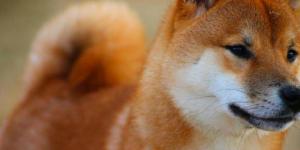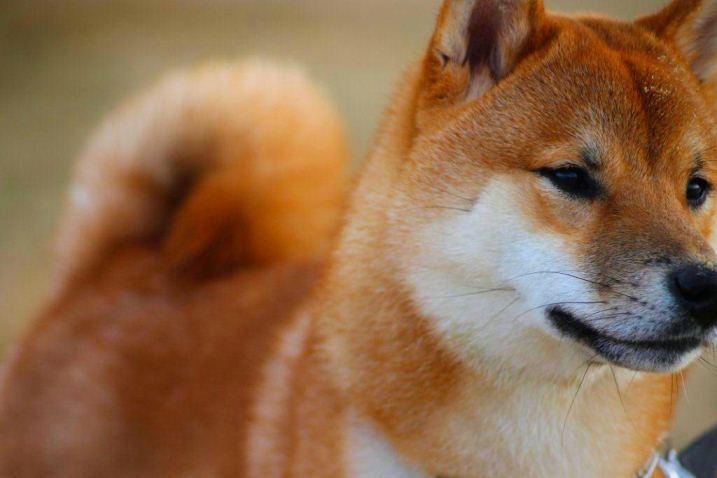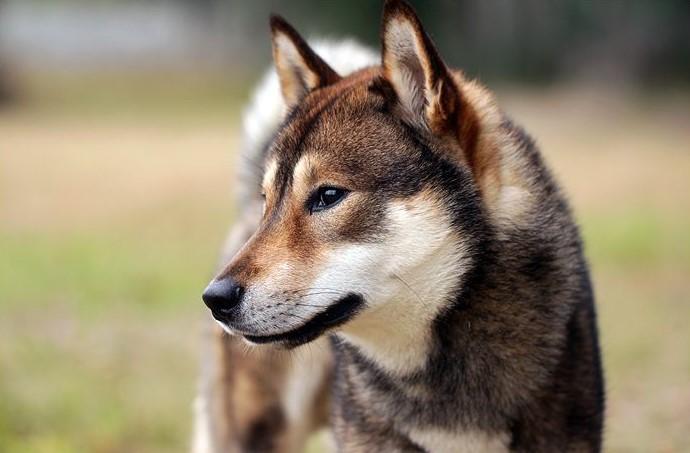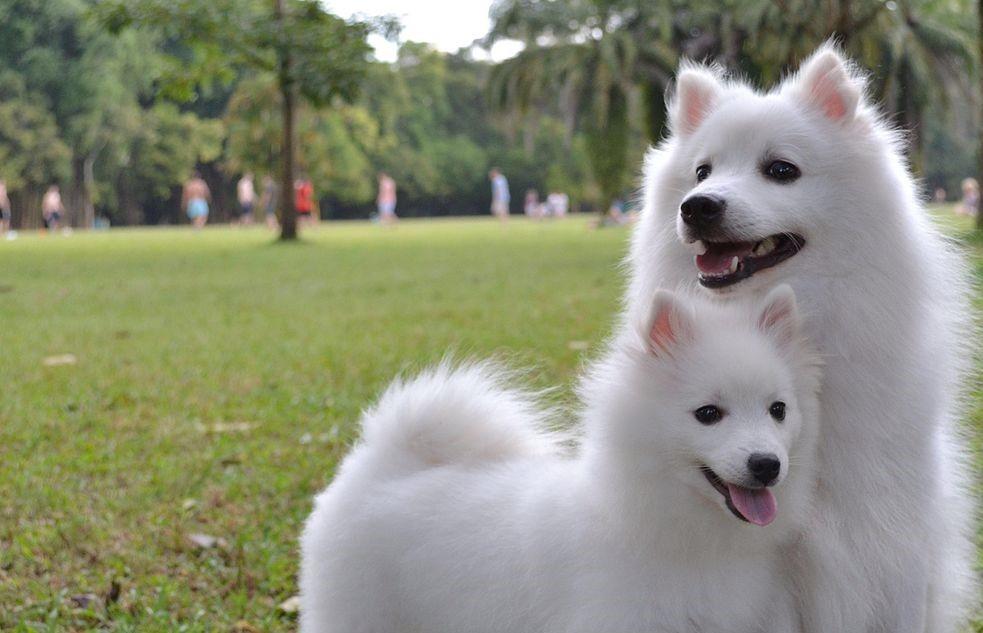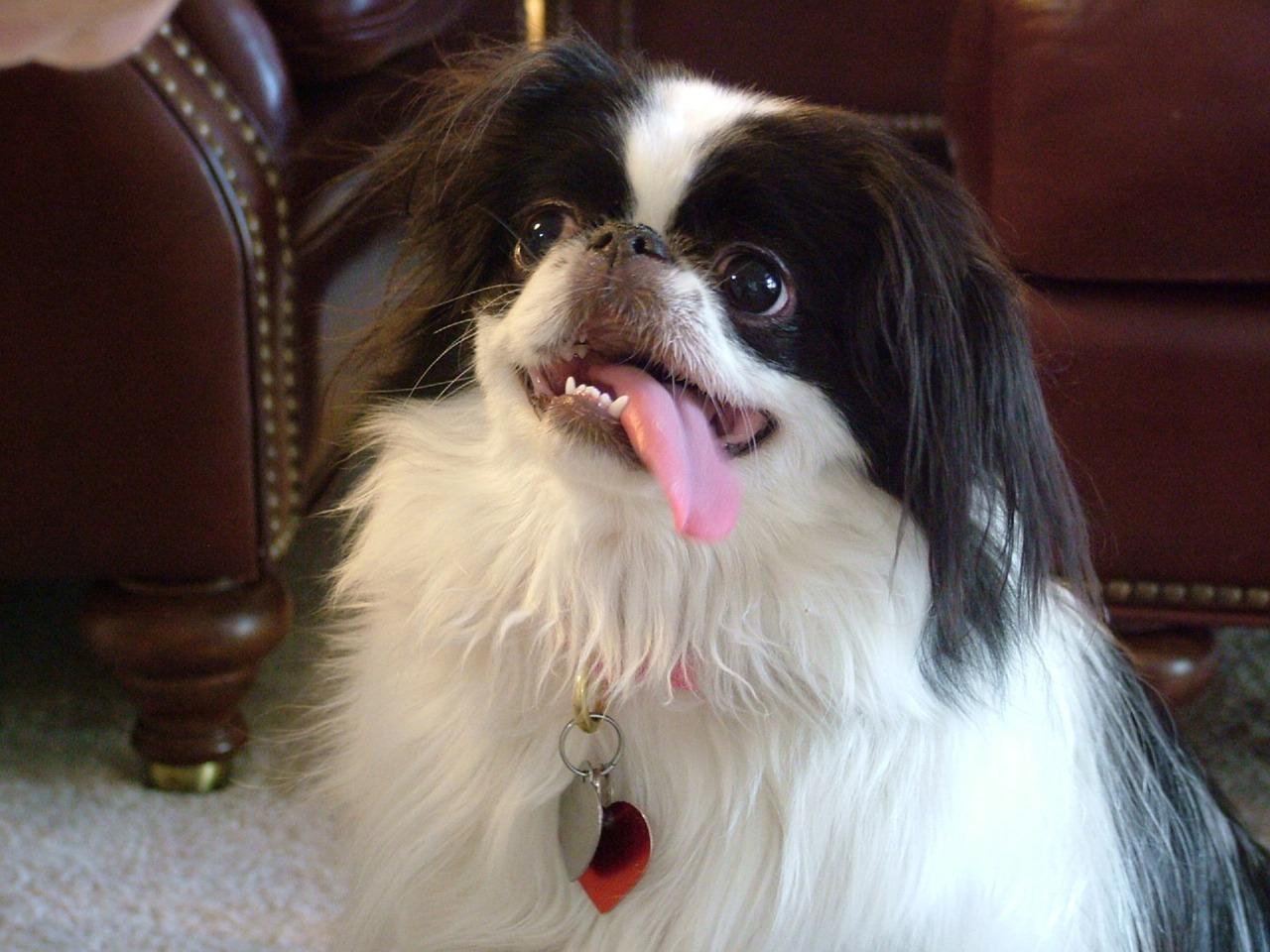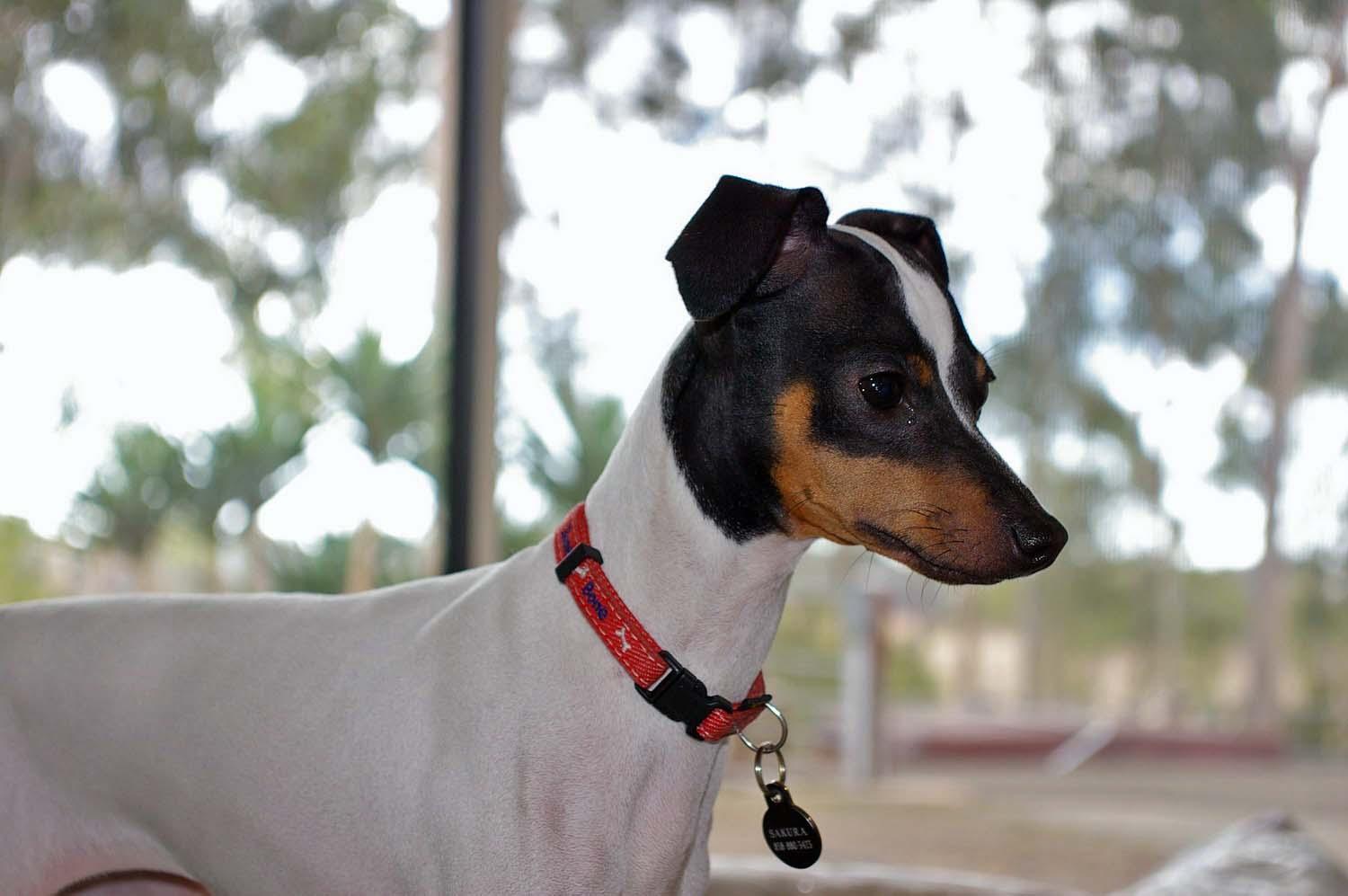Japanese Dog Breeds List



See files for Dogs
While forever popular in their country of origin, Japanese dog breeds such as the Akita Inu or the Kishu Inu are becoming increasingly common elsewhere. It is easy to understand when you see how beautiful some of these breeds can be. But it's not until you experience their amazing temperament that you'll really understand the popularity of these animals. Not all Japanese breeds are the same, but many share characteristics thanks to years of working in and around Japan's unique territories.
In this AnimalWised article, we're going to show you an extensive Japanese dog breeds list, going into detail on the appearance, behavior and history of these fascinating pooches. We'll also provide photos to show you just how compelling they can be.
- Akita Inu
- Shiba Inu
- Shikoku Inu
- Hokkaido Inu
- Kishu Inu
- Tosa Inu
- Japanese Spitz
- Kai Ken
- Japanese Chin
- Japanese Terrier
- Ryukyu dog
1. Akita Inu
The Akita Inu is a purebred Japanese dog, their history as human companion going back at least 3,000 years. Their wild ancestry extends even further. As a companion, this beautiful yet powerful dog has been used for many purposes such as bear hunting and use as a guard dog, as well as many outdoor pursuits. Nowadays, it is also used as a family dog and even a therapy dog for those with anxiety or mental health issues. However, their physical capacity has not left them and they can be used as an intelligent working dog when needed.
Their fierceness comes in part from their breeding. Akita Inus were used as hunting dogs, often cornering bears and keeping them at bay until the hunter could kill their prey. Any dog which can hold down a bear must be intimidating.
Their history can make them dominant in many circumstances and has even led some to consider the Akita Inu a dangerous dog. While this is untrue, they need to be socialized early to play well with other dogs and people. They are also incredibly loyal and will defend their family if they feel threatened. They are usually very good with kids, especially with early socialization. Like all dogs, they should not be left with young children unattended.
Their history is storied, but they have experienced dark periods. During World War II, famine hit parts of Japan and some Akita were eaten for survival. Also, the government ordered their culling to stop the spread of disease. Some were let out back into the wild where they bred with their ancestors, perhaps breeding back in some of their characteristic willfulness. They managed to survive and some American military personnel fell in love with the breed. This led to the beginning of the American Akita breed which most kennel clubs distinguish between this and the original inu, the Japanese word for dog.

2. Shiba Inu
The Shiba Inu is one of the 6 endemic Japanese spitz dogs which have been part of their culture and ecology since antiquity. A spitz dog type is one which has characteristic thick fur with pointed muzzles and ears. It is very similar in appearance to the Akita, differing mainly in terms of size as it is the smallest of these spitz Japanese dogs. Males don't usually exceed 40 cm in height. Despite their size, the Shiba is a well-muscled dog with a fox-like double coat, making it great for cold climate countries.
Similar to the Shar Pei, it is one of the breeds closest to the grey wolf. However, many Sibu Inus more resemble a red fox in their coloration with red and white a common marking. However, they can also be a white Japanese dog or have cream coloration. Like Akitas, they are very loyal and make great single-owner dogs. However, this doesn't mean they can't also be great family pets.
They are very intelligent dogs and incredibly athletic. They can be bold, but with correct socialization and obedience training they will be well behaved. This is one reason they are not great for first-time owners. They need to be with a guardian which can devote the time and effort needed to help this dog reach their potential. Some people claim they can be quite feline in demeanor, especially when it comes to personal grooming.
They also have a distinct high pitched squeal known as the ‘Shiba scream’. It can be quite disconcerting, but it is deployed both during times of fear and joy, so it's important to recognize their behavior.

3. Shikoku Inu
Originally from the island of the same name, the Shikoku Inu was formerly used to hunt large prey such as wild boar or deer. The three varieties of this breed are known as the Awa, Hongawa and Hata. It is very similar in appearance to the Shiba Inu, although it is noticeably larger. This is why it is included in the medium sized dog breed category. It is known sometimes as the Japanese Wolfdog and looking at its lupine features, you can easily understand why.
It was bred similar to a deerhunter dog in other cultures, but some breeders and owners will take the dog out hunting for wild boar to keep its skills sharp. It is as brave a dog as it is loyal, making it an incredible companion dog. It can be socialized and its wilder nature easily tamed by a patient owner.
It's agility makes it great for going out into the wild. They have a lot of energy and will also help protect you in dangerous situations. Their similarity to wolves and huskies may make them close in ancestry to the now extinct Japanese wolf.
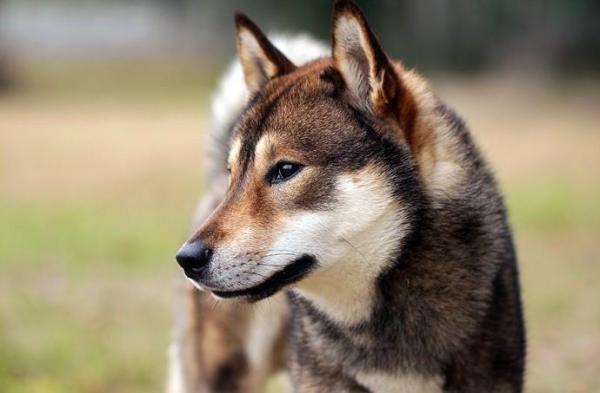
4. Hokkaido Inu
The Hokkaido Inu is a strong medium-sized dog with a rectilinear shape and robust form. While it is now definitively a Japanese dog, there is a possibility it originated in China over 3,000 years ago. They have beautiful pointed ears, with an angular appearance thanks to their triangular-shaped head and angled eyes. Like many Japanese breeds they a double coat and can come in many colors, usually ranging from red to grey or white.
This double coat helps it survive well in acute cold weather, but underneath lies a durable musculature which historically aided in the hunting of big game such as bears. As a rule, they are also durable with little health problems particularly congenital issues which can plague other breeds.
They are incredibly active dogs and will not be suited to sedentary or home living. They may need several daily walks or at the very least have a large open space to exercise on their own. If not, they can put on weight relatively easy which can lead to poor health. Ideally they should weight somewhere between 20 and 30 kilos. The most common color of this breed is beige(as you can see in the photo below), but they can present in a wide chromatic range.
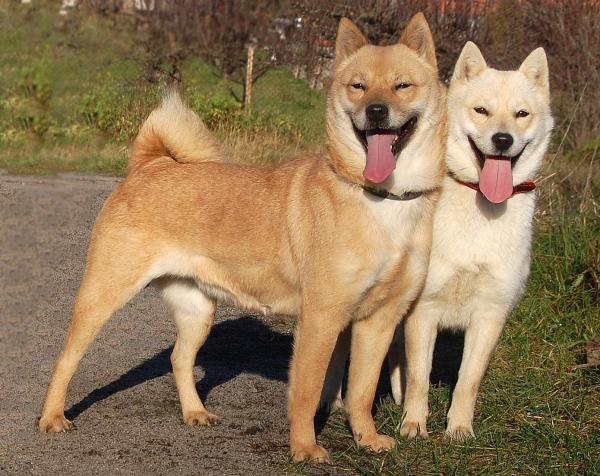
5. Kishu Inu
This white Japanese dog breed is also named after the region from which it hails. The Kishu Inu (or sometimes Kishu Ken) is sometimes confused with the above Hokkaido. It is a dog which is rarely seen outside of Japan, but can sometimes be confused with other Japanese spitz dogs.
The loyalty of a Kishu makes it a dog suitable for only one owner or one family. They will not do well if their owner has to spend a lot of time away or leave them with other families for long periods. This could lead to behavioral issues. Owners who do have the time and ability to interact with this breed will develop a close and strong relationship which will provide endless rewards.
Unlike the Shiba, Kishu may need to be cleaned fairly regularly and groomed at least once a week. Their coat is white, although some darker markings are not uncommon. Like the Akita Inu, the Kishu Inu has been declared a natural monument in Japan with a lot of honor and respect given to these lovable dogs.
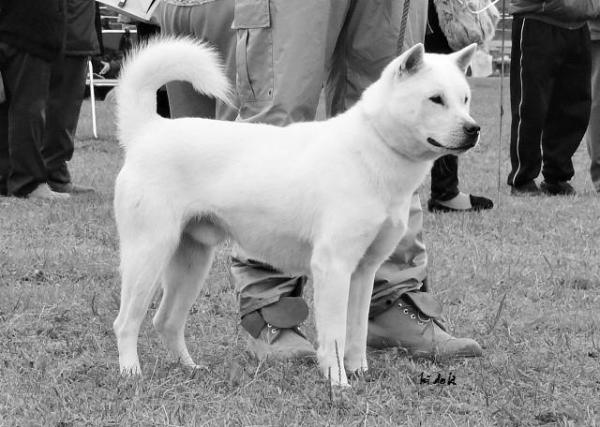
6. Tosa Inu
Unlike some of the ancient dogs in this list, the history of the Tosa Inu is relatively short. The breed derives from cross breeding which has involved dogs such as the Argentine Bulldog and the St. Bernard. As many of the Japanese dog breeds tend to be medium sized, the Tosa was bred to be a larger specimen. They have a shorter coat than most Japanese breeds and their head is a stocky and square shape usually with a longer snout.
Despite these dissimilarities, the temperament fits well with other Japanese dog breeds. They likely started from the Shikoku Inu breed, having similar levels of loyalty, bravery and intelligence. There is also some Mastiff history in their breeding, providing some familiar features as depicted in their photo below.
It is believed this breed was bred originally as a Japanese fighting dog. This can lead to them having a much fiercer side of their nature. This is not to say they cannot be domesticated or a lovely and friendly companion. But without the correct environment and training, they will likely have behavioral problems. Their reputation has led to them being banned in quite a few countries, with exceptions only for specifically licensed owners.
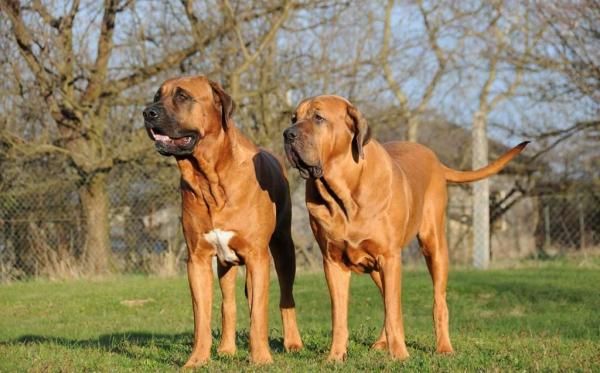
7. Japanese Spitz
Perhaps the epitome of the spitz dog is one of Japan's smallest, the Japanese Spitz. It certainly is in the running for one of Japan's cutest dogs. This is another exclusively white Japanese dog. Like the Arctic fox, they have a thick white coat, but black eyes, nose and paw pads and the hair is shorter around the muzzle. This gives them an adorable ‘polar’ look which makes them very desirable as pets.
Although a small Japanese dog breed, they are very intelligent and can be an incredibly loyal companion. They love being with a family and are great with children. Their size may not make them the greatest defensive dog, but they can be very effective guard dogs as they will bark at perceived threats. However, if well socialized they will be cautiously friendly with strangers.
Also unlike some of the other Japanese dog breeds in this list, the Japanese Spitz can be commonly found outside of the country, especially in parts of Europe like Sweden. They are great companions, but are also surprisingly low maintenance despite their thick coats. A wonderful dog to have as a pet, they can easily become part of the family. Being one of the longest living dogs, up to 16 years, then they can also be a long standing member of the family.
Learn more with our related list of small white dog breeds with photos.

8. Kai Ken
Originating from what was then known as the Kai province, the Kai Ken is one of the most striking Japanese dog breeds. They are amazing hunters and almost have a look of the wolf about them, their common brindle coloring gives them a certain wildness in appearance which develops as they grow. They have a more square-shaped head than the Akita, but there are still similarities. They are toned and muscular, making them very agile show dogs if you want them to be.
Also originally bred as hunters, they are brave and intelligent. The strong bonds they develop with their masters can be problematic in terms of socialization, but they can be incredible companion dogs if well trained. They are great at learning tricks and need to be taken out a lot of expend their seemingly inexhaustible energy.
Kai Ken are also double coated, but do not need a lot of brushing or grooming for maintenance. Around once a week is usually sufficient.
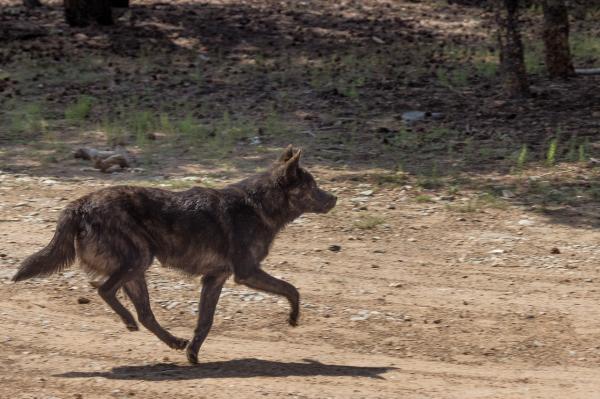
9. Japanese Chin
Also known as the Japanese Spaniel, the Japanese Chin was likely originally sourced from a breed outside of Japan. Like the Spitz, they are smaller dogs and bear a certain resemblance to the King Charles Spaniel. They will always have white on their fur, but their secondary color is usually either black or red. Some have longer or shorter hair, but they have a distinction between many other Japanese dogs in that they only have an outer layer coat. They also have slightly crossed eyes or wall eyes, something which makes some owners see them as being particularly cute.
Their history also sets them apart from other dogs on this Japanese dog breeds list. They are not worker or hunter dogs and have breen bred strictly for companionship. This means they are very loyal and dependent on their owners. This doesn't mean they aren't intelligent. They are alert and a little feline in their behavior.
The Japanese Chin are good guard dogs as they will bark at threats. However, they can also be yappy and ill-disciplined if not well socialized and given proper training when they are young.
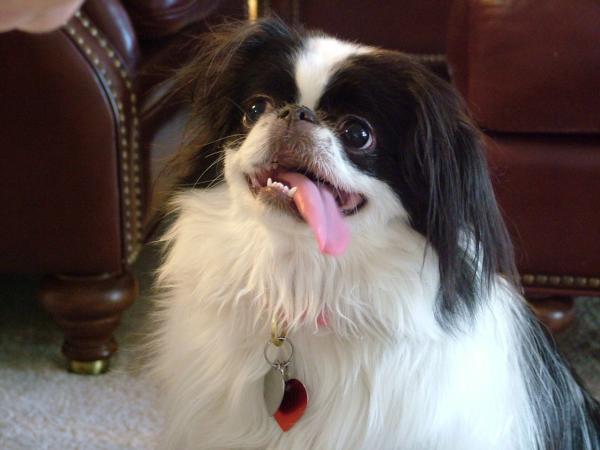
10. Japanese Terrier
Another Japanese dog breed on our list which is slightly atypical is the Japanese Terrier. Deriving most likely from the Fox Terrier, this dog is sometimes known as the Nippon Terrier. They have interesting markings in that they almost always have a fully white body with a black or black and tan head. They are a particularly small Terrier type dog breed and are not considered a Japanese Spitz dog.
Like the Japanese Chin, it is also not a working dog, although it is possible it could have been bred as a ratter dog. This is a hypothesis as they were believed to have originated from dogs brought over on European ships. They are gentle and loyal in temperament, but do like to play and can have a lot of energy. They socialize well with other dogs, children and other pets. Bred as a lapdog, they can be kept indoors, but they will need regular walks and exercise like any other dog.
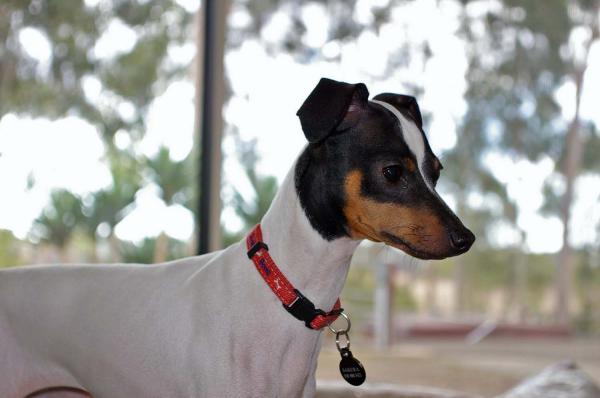
11. Ryukyu dog
The last breed on our Japanese dog breeds list is one of the rarest. Barely known at all outside their native Japan, the Ryukyu dog is considered endangered with as few as 400 specimens reported at last count. There are two distinct lines of Ryukyu dogs, the Yanbaru and the Yaeyama. They have slight differences in appearance, but they are both broad, medium-sized dogs with pricked ears and dark brown eyes.
While most Japanese dog breeds are double coated, the Ryukyu can have either a double or single coat. They have a fluffy tail which curves in on the back and they all have brindle patterns. Their color ranges from black to white, as well as red and liver. They are not as sensitive as some other Japanese dogs. Instead they are agile and natural hunters with a high prey drive. They shouldn't be around small animals, but can tolerate cats if well socialized.
This breed is generally healthy, but they do suffer some effects from inbreeding. This is because it is difficult to find new specimens to crossbreed which are not related. Efforts are under way to help grown populations of Ryukyu dogs.

If you want to read similar articles to Japanese Dog Breeds List, we recommend you visit our Comparisons category.




